Weirdness? What does that mean?
There are multiple traits that influence someone’s behavior, the way they think, feel, and act. Some of those traits are very unstable and change very often, while other traits are so constant that once you recognize them in a person you might be able to predict how they will react to a certain situation.
In the IKIGAI model we have created 8 creatures to group the most relevant traits involved in work style and interaction with coworkers. We call them weirdnesses and they are:
Cleverness

Great at Improvisation, Resourcefulness, Creativity, Curiosity and Logic.
Influence

Known for their Eloquence, Persuasiveness, Assertiveness, Insightfulness and Delegation.
Urgency

Their strongest characteristics are Ambition, Concentration, Competitiveness, Diligence and Expertise.
Agreeableness
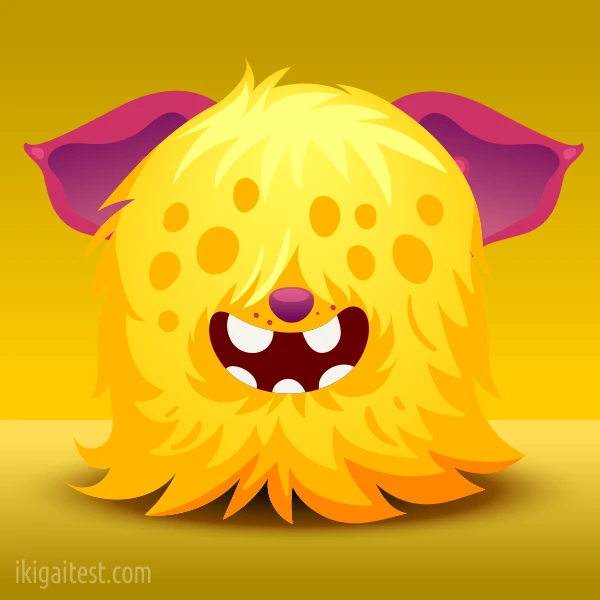
So fluffy!, and recognized for their Approachableness, Collaboration, Sociability, Empathy and Kindness.
Conscientiousness

Characterized for their love of Procedures, Meticulousness, Uniformity, Organization and Punctuality.
Honesty
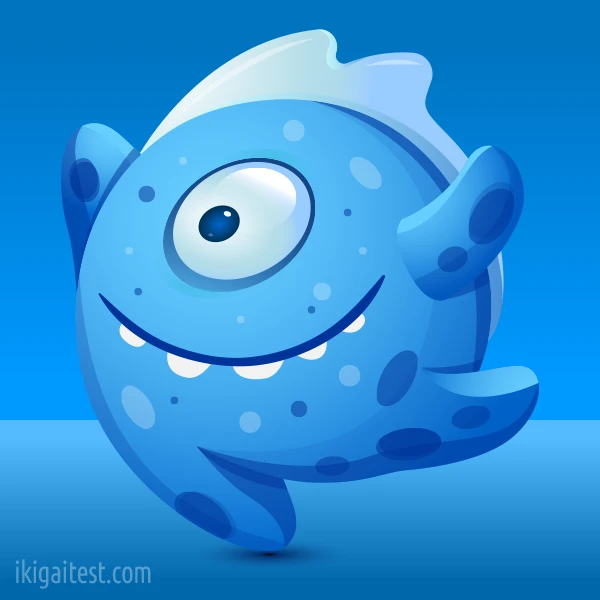
These creatures have impeccable Integrity, Reliability, Frankness and Accountability.
Calmness

The ones with unmovable Resilience, Open-mindedness (Unprejudiced), Patience and Flexibility.
Independence

They have overwhelming Determination, Self-Discipline, Autonomy and Self-Reliance.
What is the Equilibrium?
All weirdnesses are full of positive traits, but when one of those creatures is much stronger than the rest, people tend to react in the same extreme manner to very different situations… Their cute weirdness becomes a radical behavior.
- Cleverness becomes Delusion. Lives in a world of lies and fantasy, unable to change even if confronted with conflicting evidence.
- Influence becomes Corruptor. Surrounds itself by immorality and convinces others to join in, using promises of delight, money or power.
- Urgency becomes Voracity. A highly demanding and impatient creature with an inflated sense of its own importance.
- Agreeableness becomes Conformity. The fear of rejection means abandoning critical thinking and doing anything to get a like… I mean, to get acceptance.
- Conscientiousness becomes Compulsion. Dominated by obsessive, repetitive and intrusive thoughts that cause distress or anxiety.
- Honesty becomes Inhumanity. Truly incapable of feeling empathy, it is cruel and lacks any kind of compassion.
- Calmness becomes Apathy. An emotionless creature with absolute indifference towards any outcome… In the end, nothing really matters.
- Independency becomes Isolation. Is it a hermit or a tyrant? The only difference is the amount of power and authority.
Charles Darwin said “It is not the strongest of the species that survives, not the most intelligent that survives. It is the one that is the most adaptable to change.” In other words… Adapt or die.
Yes, you have a single strongest weirdness, but achieving a good balance will allow you to better interact with your coworkers and job environment. The easiest way to visualize the equilibrium is to pair each influence with a close opposite, these are not true opposites, having one trait does not cancel the other one, but it can help reduce the extremely negative behavior.
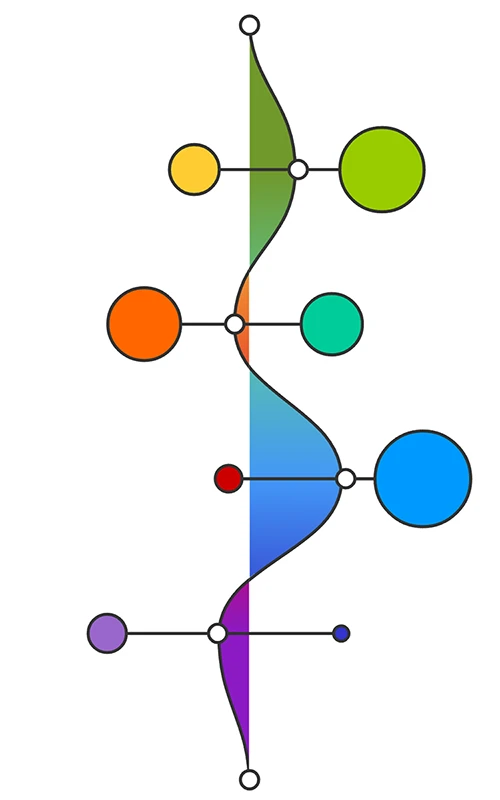
Reading the Equilibrium
In this example the weirdnesses are arranged in the following priority: Honesty, Independence, Urgency, Calmness, Agreeableness, Cleverness, Influence and Conscientiousness.
- This equilibrium shows an average Agreeableness but a very strong Independence, that’s not terrible, but might appear judgmental or grumpy to others.
- Next we have a near perfect balance called “Calmed Urgency” that’s the wonderful capacity of staying calm and focused but thinking fast and reacting efficiently during a crisis.
- The real issue with this example is the extreme unbalance of Honesty vs Influence, it’s likely that too much frankness will be seen as cruelty and a lack of empathy.
- Finally, we have a nice balance of Cleverness and Conscientiousness, tending a little bit towards creativity, however both these priorities are so weak that people might not even notice them.
Does my equilibrium reduce or limit which jobs I can perform?
Not really, or at least it shouldn’t… Let’s imagine that you work as bank teller. You could be chatty and greet every client with a smile, but you could also be quiet and efficient. If there’s a problem with an account you could talk to the client in a technical and logical way, or using a bit of creativity and empathy. You might love every aspect of your job and hope it never changes, or you might seek any chance to move up in the corporate ladder.
Your weirdness and equilibrium dictate the way you are, not what you can do.
However, life is full of clichés and certain types of jobs attract certain types of people. The interesting thing about the equilibrium is that it allows you to quickly visualize and understand a personality, so we can jump to a few conclusions when someone’s equilibrium has a distinctive shape or even a clear inclination to one side or the other, for example:
Balanced to the Left side
In this example we can see a definite inclination to the left side of the center, with high Agreeableness, Urgency, Influence and Cleverness. It’s similar to what people call a “Type A personality” but mixed with warm and creative characteristics, put a bit of Influence into the mix and you get the traits for a great a humanitarian entrepreneur, a spokesperson or patient representative.
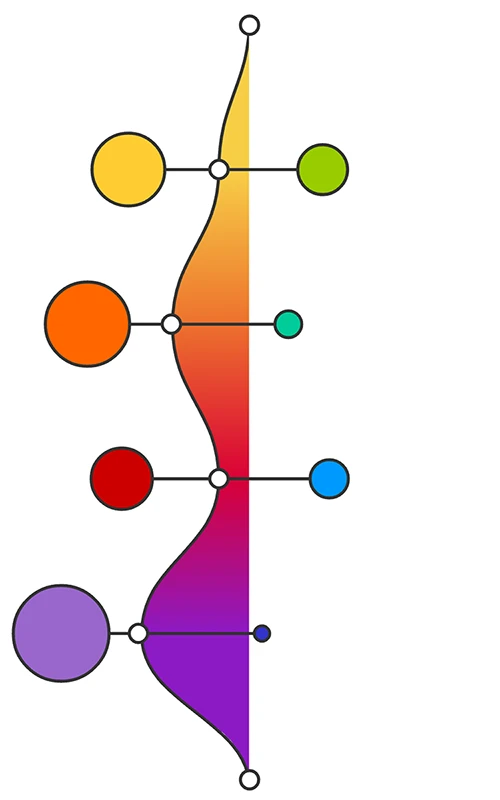
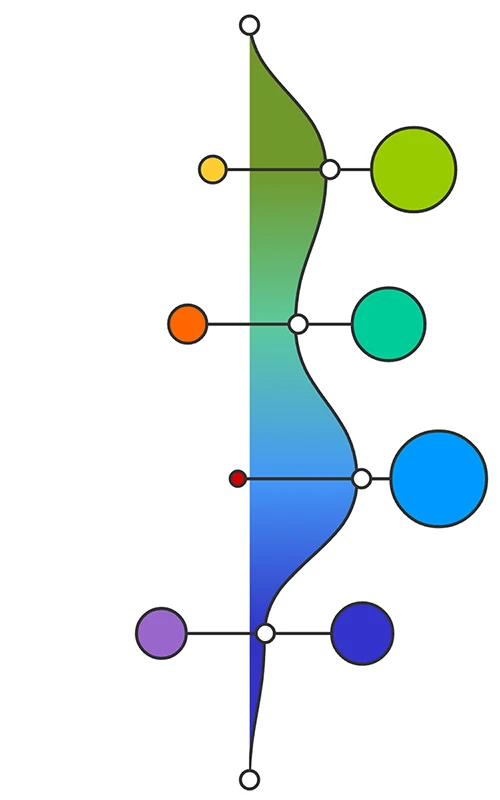
Balanced to the Right side
When everything is heavily balanced to the right side we can identify someone with a “Type B” personality: Calm and Independent, and thanks to its additional Conscientiousness and Honesty we get good traits for chief operations officers, psychiatrists, criminal investigators, judges, and financial Analysts.
Is my Equilibrium related to my Leadership style?
Of course! Now that the Equilibrium has helped you understand the way you are perceived by your coworkers, it’s a good idea to reflect on your leadership style, your approach to 4 different situations:
Making decisions, focusing on the important things, establishing goals and following procedures.
